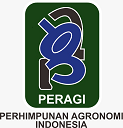Mangrove Diversity as An Indicator of Ecosystem Health on Ambon Island, Indonesia
Abstract
The research aims to determine the species richness, diversity and distribution of mangrove populations in forest areas, which is one of the parameters of forest health in the Passo Village’s mangrove forest. It was conducted from July to August 2023 on Ambon Island using the Forest Health Monitoring Field Methods Guide. The research covered 2 hectares of mangrove forest with 3 clusters of 12 observation plots. It was found that seven species of mangroves were found in the area, namely Sonneratia alba, Rhizophorastylosa, Avicennia marina, Aegiceras corniculatum, Bruguiera gymnorrhyza and Bruguiera parviflora. Cluster 1 had 260 trees. Cluster 2 had 321 trees, and Cluster 3 had 193 trees. The highest value of mangrove species richness was at the sapling level of 1,003. Meanwhile, the species diversity was classified as low at only 0.701 at the seedling level. The highest density of the Sonneratia alba species was 4,290, the species dominance of the Sonneratia alba was 22,240, and the highest importance index occupied by the Sonneratia alba was 160.95. Considering the low level of mangrove forest biodiversity on Ambon Island, rehabilitation and reforestation efforts are needed to maintain the quality and health of the ecosystem, especially in facing the impact of climate change on small islands.
Keywords
Full Text:
PDFReferences
Bai, J., Meng, Y., Gou, R., Lyu, J., Dai, Z., Diao, X., Zhang, H., Luo, Y., Zhu, X., & Lin, G. (2021). Mangrove diversity enhances plant biomass production and carbon storage in Hainan island, China. Functional Ecology, 35(3). https://doi.org/10.1111/1365-2435.13753
Cardoso, A. W., Malhi, Y., Oliveras, I., Lehmann, D., Ndong, J. E., Dimoto, E., Bush, E., Jeffery, K., Labriere, N., Lewis, S. L., White, L. T. J., Bond, W., & Abernethy, K. (2019). The Role of Forest Elephants in Shaping Tropical Forest–Savanna Coexistence. Ecosystems. https://doi.org/10.1007/s10021-019-00424-3
Chowdhury, R., Sarkar, S., Nandy, A., Talapatra, S. N., Mekonen, S., Roché, J., Godinho, C., Rabaça, J. E., Frochot, B., Faivre, B., Mendes, A., Dias, P. C., Mouchet, M. A., Villéger, S., Mason, N. W. H., Mouillot, D., Siddig, A. A. H., Ellison, A. M., Ochs, A., Whelan, C. J. (2014). Assessment of Bird Diversity as Bioindicators in Two Parks, Kolkata, India. International Letters of Natural Sciences, 16(1), 131–139. https://doi.org/10.18052/www.scipress.com/ilns.16.131
Durán, A. P., & Barbosa, O. (2019). Seeing Chile’s forest for the tree plantations. Science. https://doi.org/10.1126/science.aaz2170
Gray, C. L., Simmons, B. I., Fayle, T. M., Mann, D. J., & Slade, E. M. (2016). Are riparian forest reserves sources of invertebrate biodiversity spillover and associated ecosystem functions in oil palm landscapes? Biological Conservation, 194, 176–183. https://doi.org/10.1016/j.biocon.2015.12.017
Landis, M. S., Berryman, S. D., White, E. M., Graney, J. R., Edgerton, E. S., & Studabaker, W. B. (2019). Use of an epiphytic lichen and a novel geostatistical approach to evaluate spatial and temporal changes in atmospheric deposition in the Athabasca Oil Sands Region, Alberta, Canada. Science of The Total Environment. https://doi.org/10.1016/j.scitotenv.2019.07.011
Latumahina, F., Borovanska, M., Musyafa, Sumardi, Putra, N. S., & Janda, M. (2015). Ants of Ambon Island – Diversity survey and checklist. ZooKeys, 472, 43–57. https://doi.org/10.3897/zookeys.472.8441
Lossou, E., Owusu-Prempeh, N., & Agyemang, G. (2019). Monitoring Land Cover changes in the tropical high forests using multi-temporal remote sensing and spatial analysis techniques. Remote Sensing Applications: Society and Environment. https://doi.org/10.1016/j.rsase.2019.100264
Maiti, S. K., & Chowdhury, A. (2013). Effects of Anthropogenic Pollution on Mangrove Biodiversity: A Review. Journal of Environmental Protection, 04(12). https://doi.org/10.4236/jep.2013.412163
Matos-Maraví, P., Clouse, R. M., Sarnat, E. M., Economo, E. P., LaPolla, J. S., Borovanska, M., Rabeling, C., Czekanski-Moir, J., Latumahina, F., Wilson, E. O., Wilson, E. O., & Janda, M. (2018). An ant genus-group (Prenolepis) illuminates the biogeography and drivers of insect diversification in the Indo-Pacific. Molecular Phylogenetics and Evolution, 123, 16–25. https://doi.org/10.1016/j.ympev.2018.02.007
Meng, P., Wang, H., Qin, S., Li, X., Song, Z., Wang, Y., Yang, Y., & Gao, J. (2022). Health assessment of plantations based on LiDAR canopy spatial structure parameters. International Journal of Digital Earth, 15(1). https://doi.org/10.1080/17538947.2022.2059114
Mouchet, M. A., Villéger, S., Mason, N. W. H., & Mouillot, D. (2010). Functional diversity measures: An overview of their redundancy and their ability to discriminate community assembly rules. Functional Ecology, 24(4), 867–876. https://doi.org/10.1111/j.1365-2435.2010.01695.x
Nuraeni, Y., Latumahina, F. S., Cahyono, T. D., & Nuroniah, H. S. (2020). Caterpillar Bag As Pests At Sengon ( Falcataria Moluccana ( Miq .) Barneby And J . W Grimes ) At Forest Area With Special Purpose ( KHDTK ). 9(02), 3884–3887.
Owuor, M. A., Mulwa, R., Otieno, P., Icely, J., & Newton, A. (2019). Valuing mangrove biodiversity and ecosystem services: A deliberative choice experiment in Mida Creek, Kenya. Ecosystem Services, 40. https://doi.org/10.1016/j.ecoser.2019.101040
Safe’i Rahmat, Indriani, Y., Darmawan, A., & Kaskoyo, H. (2019). Status Pemantauan Kesehatan Hutan yang Dikelola Oleh Kelompok Tani Hutan SHK Lestari : Studi Kasus Kelompok Tani Hutan Karya Makmur I Desa Cilimus , Kecamatan Teluk Pandan , Kabupaten Pesawaran , Provinsi Lampung. Jurnal Silva Tropika, 3(2), 185–198.
Salsabila, R., Hariyadi, H., & Santoso, N. (2021). Tree Health Management Strategy in Cianjur Urban Forest. Jurnal Sylva Lestari, 9(1), 86. https://doi.org/10.23960/jsl1986-103
Schulze, E. D., Craven, D., Durso, A. M., Reif, J., Guderle, M., Kroiher, F., Hennig, P., Weiserbs, A., Schall, P., Ammer, C., & Eisenhauer, N. (2019). Positive association between forest management, environmental change, and forest bird abundance. Forest Ecosystems, 6(1). https://doi.org/10.1186/s40663-019-0160-8
Siddig, A. A. H., Ellison, A. M., Ochs, A., Villar-Leeman, C., & Lau, M. K. (2016). How do ecologists select and use indicator species to monitor ecological change? Insights from 14 years of publication in Ecological Indicators. Ecological Indicators, 60, 223–230. https://doi.org/10.1016/j.ecolind.2015.06.036
Tian, Y., Huang, H., Zhou, G., Zhang, Q., Xie, X., Ou, J., Zhang, Y., Tao, J., & Lin, J. (2023). Mangrove Biodiversity Assessment Using UAV Lidar and Hyperspectral Data in China’s Pinglu Canal Estuary. Remote Sensing, 15(10). https://doi.org/10.3390/rs15102622
Titisari, P. W., Elfis, Chahyana, I., Janna, N., Nurdila, H., & Widari, R. S. (2022). Management Strategies of Mangrove Biodiversity and the Role of Sustainable Ecotourism in Achieving Development Goals. Journal of Tropical Biodiversity and Biotechnology, 7(3). https://doi.org/10.22146/jtbb.72243
Wu, L., Kato, T., Sato, H., Hirano, T., & Yazaki, T. (2019). Sensitivity analysis of the typhoon disturbance effect on forest dynamics and carbon balance in the future in a cool-temperate forest in northern Japan by using SEIB-DGVM. Forest Ecology and Management. https://doi.org/10.1016/j.foreco.2019.117529
Refbacks
- There are currently no refbacks.


























